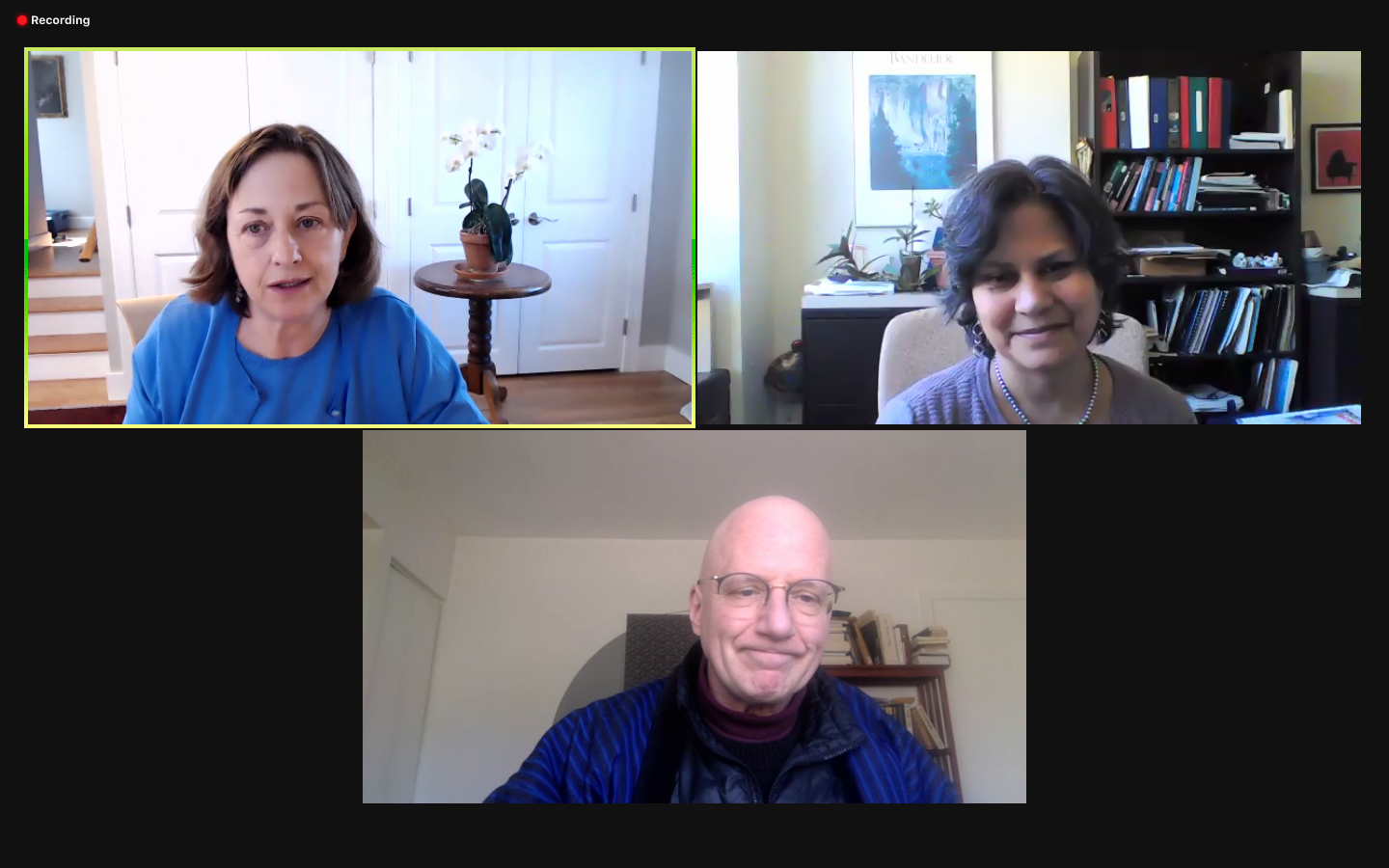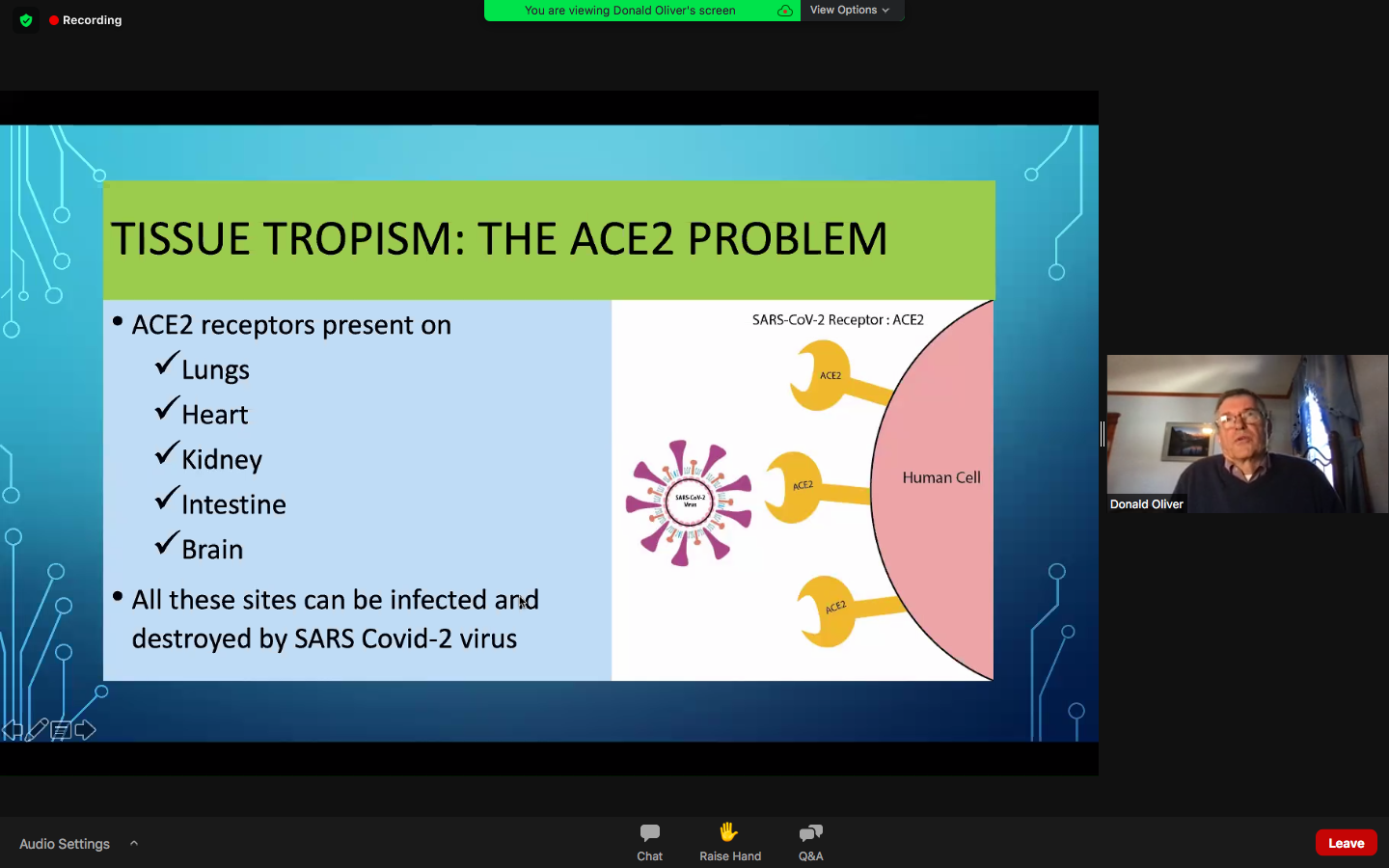
c/o Ava Nederlander, Photo Editor
The University hosted a webinar titled “Why Get Vaccinated? A Conversation and Q&A with Wesleyan’s experts” on Monday, March 15. Mediated by Dean of the Natural Sciences and Mathematics Jan Naegele, the webinar consisted of a series of presentations by Davison Health Center Medical Director Dr. Tom McLarney, Daniel Ayres Professor of Biology Donald Oliver, Fisk Professor of Natural Sciences Ishita Mukerji, John E. Andrus Professor of History William Johnston, and Huffington Foundation Professor in the College of the Environment and Professor of Biology Frederick Cohan. The speakers promoted the COVID-19 vaccine, shared their professional and disciplinary perspectives on vaccination, and answered questions from attendees.
At the time of publication, Connecticut is on track to expand COVID-19 vaccine eligibility to all state residents and workers over the age of 16 on Monday, April 5. Although demand currently exceeds the available supply of vaccines, fighting widespread anti-vaccination sentiments and misinformation within college communities will become important in halting the spread of COVID-19, particularly as supply increases and eligibility expands. The University currently does not require eligible employees to be vaccinated.
McLarney began the webinar by dispelling myths that the vaccines cause infertility or are a ploy to insert microchips. McLarney noted that the vaccine’s real side effects, ranging from a sore arm to low fever, are preferable to getting sick with COVID-19.
“As individuals we should get these vaccines because they will protect us,” McLarney said. “We know that all these vaccines have wonderful efficacy for the very important metrics. It will keep us out of the hospital, and it will keep us from dying.”
Addressing vaccine hesitancy, McLarney explained that anyone offered any FDA-approved vaccine should take it, because the statistical differences between the vaccines are attributable to the prevalence of COVID-19 variants at the times of the vaccine trials.

c/o Ava Nederlander, Photo Editor
The webinar continued with a presentation from Oliver on the microbiology of SARS-CoV-2, the virus that causes COVID-19. According to Oliver, when viruses enter cells, they repurpose cell replication parts and materials for their own use, rapidly creating more viruses and killing cells.
“Because viruses are not cells, but use [our bodies,] we cannot harness our arsenal of antibiotics or drugs that would typically be employed for bacterial, fungal, or protozoan pathogens,” Oliver said. “That’s because most of the proteins and other components that viruses use belong to us. However, viruses do make a few specific proteins of their own, and these can be good drug targets.”
COVID-19 is easily transmittable because it is a respiratory disease and can manifest asymptomatically, but Oliver argued that the virus is particularly alarming because it goes beyond the respiratory system. While most coronaviruses infect cells in the respiratory tract, SARS-CoV-2 has a receptor that allows it to bind to a protein present in lung, heart, kidney, intestine, and brain cells, allowing COVID-19 to harm and destroy organs throughout the body. Nonetheless, according to Oliver, acute respiratory distress syndrome remains a major cause of deaths from COVID-19.
“We mourn the loss of over 534,000 Americans and 2.65 million people worldwide who died of this disease, leaving behind all their loved ones,” Oliver said.
Mukerji then spoke to the development and mechanism of the vaccines. Early in the pandemic, scientists sequenced the SARS-CoV-2 genome and compared it to the genomes of older and more studied coronaviruses. The similarities they noticed between the genomes allowed them to speed up the vaccine development process.
“You can see the amino acids that make up the protein and how many of them are the same, and so the scientists were able to take this information and start immediately working on making or thinking about the vaccine because of its similarities with the original SARS virus,” Mukerji said.
Mukerji explained that many vaccines use weakened or dead viruses to prod the immune system, but the current COVID-19 vaccines use portions of viral mRNA and DNA. Unlike weakened or dead viruses, mRNA can be altered to account for different virus variants, making the vaccines a more adaptable weapon against COVID-19. Producing mRNA vaccines is also faster and easier because mRNA is made through a chemical rather than biological process. Once injected, the mRNA COVID-19 vaccines mimic a virus, entering cells and using cell replication machinery to produce the spike proteins SARS-CoV-2 uses to enter cells, provoking immunity.
“mRNA is only for the spike protein or portions of the spike protein,” Mukerji said. “It does not encode for any other aspects of the virus, and so taking the vaccine will not actually expose you to the virus at all but just to the spike protein.”
Johnston then presented a brief history of anti-vaccination sentiments and vaccine hesitancy. After sharing a series of anti-vaccination images, including a mid-19th century cartoon depicting the cowpox vaccine turning people into cows, Johnston emphasized that individuals’ reasons for not getting vaccinated vary widely. Johnston argued that persuading people to get vaccinated requires an empathetic and personalized approach.
“It’s important to keep a mind that the opposition to vaccines is a spectrum,” Johnston said. “There [are] people who are just unsure, and these tend to be people who are open to listening to the pros and cons.”
Cohan ended the presentations with a population biologist’s perspective on the overlap between selfish and communitarian motivations for vaccination. Expanding on McLarney’s comments, Cohan explained that herd immunity allows individuals and communities to benefit from one another. According to Cohan, both vaccinated and unvaccinated individuals are less likely to come into contact with the virus when more people are immune, extending protection to people who cannot get vaccinated for medical reasons and filling in the gap between real and 100% efficacy. Cohan emphasized that “community” isn’t just local; continued COVID-19 transmission anywhere leads to mutations that threaten everyone.
“One last level of communitarianism and selfishness is, ‘Can we get beyond herd immunity toward global eradication of SARS-2,’” Cohan said. “And of course it involves behaving in the best way: It involves getting vaccinated, it involves delivering vaccines to places [with fewer resources] like Ghana.”
Elias Mansell can be reached at emansell@wesleyan.edu.
Comments are closed